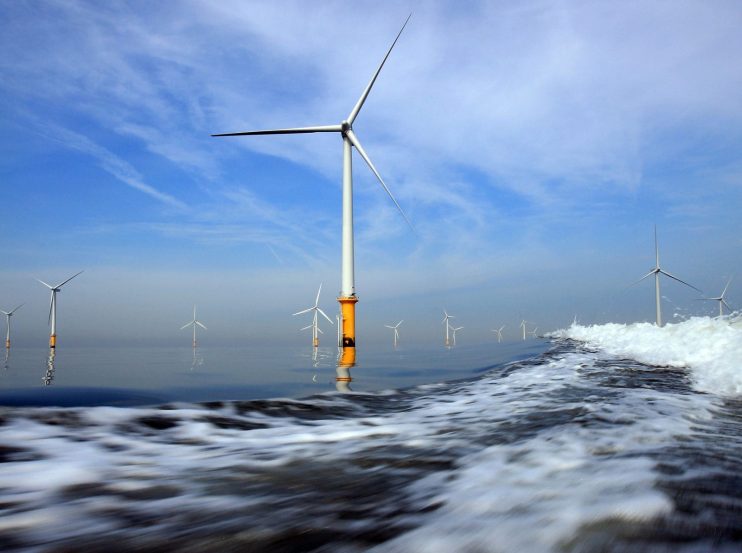Green energy — it’s bigger than the internet

Last week, media outlets across the country suggested a new rule of internet etiquette: scrap unnecessary emails in order to save the planet.
We should all, apparently, stop sending “thank you” emails, as the servers transmitting them use even more energy, emitting carbon and contributing to climate change.
Don’t get me wrong, I am all for reducing carbon emissions to fight climate change. Plus fewer emails would be a delight in and of itself.
But the call to ration email use is a small yet powerful example of the fundamental flaw in how we think about saving the planet.
Climate change is humanity’s greatest challenge, and we need to take radical action to solve it. But guilt-tripping people, hoping they will cut back on carbon-intensive activities — even if it’s just that one little email — is wrong-headed (especially when it’s something as ridiculous as suggesting that emails are a major contributor to our carbon footprint, which they are clearly not).
Instead of telling everyone what not to do, we need to enable people to live the lives they want without the carbon impact of today.
How do we do that? We replace dirty energy with clean — and we make it cheap.
For far too long, going green was the privilege of the rich. Green energy was seen as expensive — a perception energy companies did little to dispel, with the talk of “green taxes”.
The good news is that the era of cheap green energy has begun. When you generate electricity from fossil fuels you need to buy the coal and gas that you’ll burn. With wind and sun, the inputs are free. What costs money is the equipment needed to turn those inputs into power.
Thanks to the leadership of countries like the UK, that hardware has become cheap enough that wind and solar plants are increasingly inexpensive to build. In fact, they’re becoming cheaper every year. According to the International Energy Agency, solar photovoltaic is now the cheapest way to produce electricity, coming in cheaper than new gas or coal-fired power stations, and wind power is following suit.
For customers, this should lead to lower electricity bills when they go green. But that’s still not really happening.
It’s bonkers, but in this country electrons — whether green or not — carry both poll taxes and sin taxes. The poll taxes mean that even when wholesale electricity prices drop to near zero on windy or sunny days, customers don’t see any benefit.
And the sin taxes are even less justifiable. Hard as it is to believe, green electricity carries hefty climate taxes in the UK, whereas dirty gas doesn’t.
To put this in perspective, we buy electricity from homes with solar panels, paying about 5p per kilowatt hour (kWh). By the time it’s got next door, we sell it for about 14p. Almost the entire difference is the sin taxes and poll taxes paid for accessing just 10 metres of wire.
Fixing this perverse model should be high up the priority list for Ofgem and the government. Because so much else is slotting into place that will enable the fantasy of guilt-free green power to become a reality.
In transport, the UK is already on the right track. In 2010, few could imagine that electric vehicles would someday be cheaper than petrol-fuelled cars. Back then, Tesla’s Roadster had a price tag of £110,000. A decade later, prices for EVs have dropped dramatically, with the cheapest now selling for £20,000. And that’s ahead of an expected avalanche of new models in the next 1–2 years, and before we have a meaningful second-hand market.
EVs are rapidly becoming the new normal, and the same will happen with super efficient electric heat pumps once they move from a cottage industry to mass-market. Heat pumps are like magic. They turn 1 kWh of electricity into 2.5–4 kWh of heat. Gas boilers, by contrast, emit less than 1 kWh of heat for every unit they take in.
The clean energy and tech revolution is well underway — and economics is driving it. We’re on the cusp of a renewable world. Carbon-free solar and wind energy is not only unlimited — with no input costs, it can become so cheap that it will lead to a burst of innovation.
We will see new energy-intensive businesses that could have never survived in a fossil energy world, such as vertical indoor farms, spring up across the globe. We could even see a resurgence in heavy industries. Just last week, a US steel producer announced its plans to build a colossal solar farm — enough to power 31,000 houses — to enable it to move to cleaner operations, while cutting costs at the same time.
There is still a lot of work to do: we need to install many more solar and wind farms, build storage facilities, and digitalise the grid. And, crucially, we desperately need to address the sin taxes and poll taxes on green electrons.
But still, it’s time to get excited. Green energy will change our future forever — it’s bigger than the internet.
Main image credit: Getty